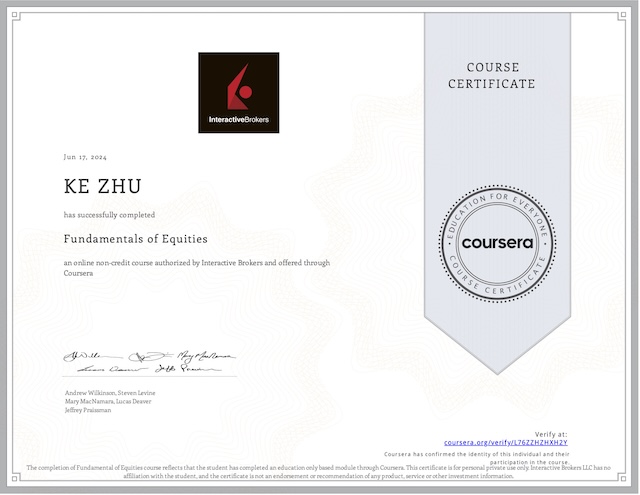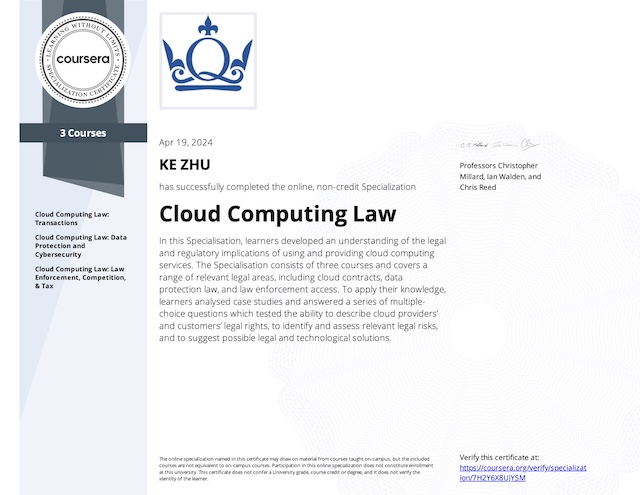The term reorganization is often associated with financial difficulty, such as the reorganization of debts under state or federal bankruptcy laws. For taxes purposes, however, the term refers to any corporate restructuring or rearrangement, which can, but does not necessarily occur at the end of the corporate life cycle.
The US tax system aims to encourage growth. Congress also allows corporations to reorganize their business dealings without current tax consequences, as long as certain conditions are met. As such, tax differed status may apply to several different types of corporate reorganizations, including:
- Acquisitions
- Combinations
- Consolidations
- Divisions, and
- Changes in the jurisdiction of incorporation or even company name
Historical Background
Lawyers, accountants and bankers have a long history of creating restructuring transactions, which were designed to increase firm value through efficiency and operations, while generating professional fees in the process.
In a series of cases spanning the 1920s, the US Supreme Court destined to protect the tax base, held that even slight modifications to corporate operations were taxable events requiring gain or loss recognition. However Congress intervened by enacting one of the first non-recognition statutes in the Code.
No gain or loss shall be recognized on the re-organization, merger or consolidation of a corporation, where a person received in place of stock or securities owned by him, new stock or securities of no greater value.
§202(b), Revenue Act of 1918
In other words, if a shareholder received nothing else but new shares with the same value, there was no realization event to tax. Congress reasoned that taxes should not impede these transactions as they are simply modifications to continuing interest in property, albeit in modified form, and the new property received is substantially a continuation of the old investment still unliquidated.
But, insofar as a shareholder liquidates an interest in a corporation, gain or loss recognition is then appropriated. A later version of these rules provided that shareholders must recognize realized gains to the extent of any boot received, that is some wherewithal to pay tax. Congress then refine these rules to make it clear that non-recognition meant gain deferral and not complete forgiveness indefinitely. Since the 1920s, this tax favorable means of encouraging business development has evolved into a vast body of law that governs some of the most financially significant and notoriously complex business transactions. Experts describe the tax rules of re-organisations as extraordinarily complex even for the code.
Tax-Deferred Reorganizations
To qualify for tax deferral, a corporate restructuring or rearrangement must satisfy:
- One of the 7 definitions of a reorganization in §368
- Five general and judicial principles of uncertain scope
Five Principles
| Pursuant to a plan | Ensures that all parties involved actually intend to reorganize the business affairs, rather than simply obtain a favorable tax outcome for a specific transaction or series of transactions. |
| Continuity of interest test | Tax deferral and a reorganization is based on the presumption that the shareholders of an acquired target corporation retain a continuing equity interest in the target corporation’s assets or historic business, via ownership of stock in the acquiring corporation. |
| Continuity of business enterprise test | An acquiring corporation must continue the target corporation’s historic business or continue to use a significant portion of the target’s historic business assets. |
| Bona fide business purpose | Reorganization must have a business purpose other than tax avoidance. |
| Step transaction doctrine | Application of the step transaction doctrine cannot alter the economic substance and business purpose of the reorganization. |
If any of these general principles are not met, then the tax consequences of a restructuring transaction are governed by other provisions of Subchapter C.
If all five requirements are satisfied, then tax deferral status depends on whether the transaction meets one of the seven definitions of a reorganization in §368.
Seven Types of Reorganizations
§368(a)(1) states that the term reorganization applies to seven different types of corporate restructurings or rearrangements. If the relevant general and judicial principles are satisfied, then tax deferred status applies.
Type A: Stock-for-Assets
Type A reorganization is defined by §368(a)(1)(a) as a statutory merger or consolidation. The terms statutory refers to a merger or consolidation pursuant to local or state corporate statutes. At a high level, type A reorganizations are stock-for-asset acquisitions.
In a statutory merger, two or more corporations combine together with one of the corporations retaining its existence and absorbing the others. Either the target or the acquiring corporation can cease to exist by operation of state law.
This transaction design alternatives create several sub-types of statutory mergers:
- Upstream or forward acquisition: Target corp is merged into the acquiring corp.
- Downstream or reverse acquisition: Acquiring corp is merged into the target corp.
| Advantages | More flexible transaction design Voting stock is not required |
| Disadvantages | Approval from shareholders Cost of reassigning asset ownership The cost can sometimes be alleviated by using a variation of type A merger: 1. Forward Triangular Merger: when an acquiring company forms a subsidiary to merge with the target company. 2. Reverse Triangular Merger |
In a statutory consolidation, the assets of two or more corporations are transferred to a newly created entity, followed by dissolution of the two pre-existing transfer corporations. The shareholders of each transfer corporation become shareholders in the new corporation, by operation of law.
Type B: Voting-Stock-for-Stock
The acquiring corporation can only use its voting stock or the voting stock of its parent, if applicable, to acquire at least 80 percent of the voting power and 80 percent of the non-voting stock of the target.
The inclusion of as little as one dollar of boot can cause the entire transaction to be taxable, because boot is not allowed in a type B reorganization, gain is rarely recognized.
Despite the disadvantage of having to use only voting stock, a type B reorganization is fairly straightforward. The target shareholders often act individually and transferring their stock to the acquiring corporation, meaning the target and acquiring corporations are not directly involved.
Type C: Voting-Stock-for-Assets
The acquirer obtain substantially all of the assets of the target in exchange for acquirer’s voting stock and a limited amount of other property. Target must then distribute all assets received in the reorganization along with any of its own property retained and then liquidate.
Notice that upon completion, the ownership structure closely resembles that of type A. A key distinction:
- Type A is statutory mergers and consolidations, governed by state law
- Type C is governed by IRC, more restrictive in terms of the consideration used by acquirer
Type D: Divisions
Type D reorganizations are quite different, because they are largely used to divide a corporation. Type D can be divisive or non-divisive:
In a non-divisive reorganization, it involves a corporation transferring all or part of its assets to another corporation. And immediately after, the shareholders of the transferor corporation own at least 50% of the voting power or value of the transferee corporation. This structure is similar to a Type C reorganization.
There are many reasons why a corporation might divide itself by transferring assets to two or more other corporations. In a divisive reorganization, the terminology is reversed:
- Transferor is Acquirer
- Transferee is Target
In a divisive reorganization, one or more corporations are formed to receive all or part of the transferring corporation’s assets.
Assets→
Transferor - - - - - - - Transferee
← StocksIn exchange for its assets, the transferring corporation must receive at least 80% of the newly formed corporation’s stock, which must be transferred to its shareholders. Both assets transferred and assets retained by the transferring corporation must be from active businesses, conducted for at least 5 years beforehand.
These broad requirements create three separate types of divisive reorganizations: Spin-offs, Split-offs, and Split-ups.
Type E: Recapitalization
Major changes in the character and amount of outstanding capital stock, securities, or paid-in capital of a corporation. Recapitalizations range from:
- Simple amendments to the corporate charter
- A change in the redemption price or liquidating value of a stock
- An actual change of stock between the corporation and shareholders
However, because no property stock or debt is exchanged with another corporation, type E reorganizations often have no direct tax implications for the corporation.
Type F: Mere Change
A mere change in identity, form, or place of organization.
Conceptually, these are reorganizations because important attributes such as name, state or country of incorporation, defining a corporation’s existence change.
Type G: Bankruptcy
A corporation must be insolvent before the reorganization and maybe in Chapter 11 Bankruptcy or a similar state or federal court proceeding.
Tax Consequences
The tax treatment of a tax-deferred reorganization is very similar to that of like-kind exchanges under Section 1031. However, by definition, the property transferred in a like-kind of exchange does not include financial instruments, such as stock or securities.
Thus, when a transaction qualifies as a reorganization under §368, the tax treatment is essentially governed by §361 Non-Recognition of Gain or Loss to Corporations; Treatment of Distributions.
- In general, a qualified reorganization results in no gain or loss recognition for the corporations.
- However, gain recognition may occur when other consideration known as boot is transferred by the acquiring corporation.
- Boot is defined here as any asset other than the stock exchange in the reorganization.
- The only time where shareholders might recognize losses in reorganizations is when they only receive boot, that is no stock at all.
Regarding basis, assets, that is transferred from the target to the acquiring corporation, received carryover or exchange basis consistent with non-recognition transactions. The acquirer’s basis however is increased by any gain recognized by the target corporation.
Acquirer's basis
= Carryover/exchange basis + Gain recognized by target corpFor shareholders, basis and stock received equals the basis of the surrendered stock, which is then increased by any gain or dividend income recognize, and reduced by the fair market value of any boot received.
Shareholder's basis
= Basis of surrendered stock
+ Gain or dividend income recognized
- Fair market value of any boot receivedExamples
Example: Person A transferred all of his stock in Corp B to Corp C in a Type A merger. In exchange, he received stock of Corp C worth $800,000 and $200,000 cash. His basis in his stock was $250,000. What amount of gain (if any) does Person A recognize?
Stock $800,000
+ Cash $200,000
= Amount realized $1,000,000
- Adjusted basis $250,000
= Realized gain $750,000
Recognized gain $200,000A Type A merger that qualifies, then it should not be recognized. However, we know that we have boot present. So he will recognize a gain to the extent of the boot received, which is the cash in this case.
What is his basis in the Corp C shares?
Carryover basis $250,000
+ Gain recognized $200,000
- Boot received $200,000
= New basis $250,000Example: Under a Type B reorganization plan adopted this year, Person A exchanges 100 shares of Corp B common stock with a basis of $355,000 for 400 shares of Corp C worth $549,000. What amount of gain or loss (if any) does Person A recognize?
There is no gain or loss recognize unless there is boot present, but as we can see from the facts of the problem, there is no boot present, thus, there is no gain recognized.
What is his basis in the Marley shares?
Carryover basis $355,000
+ Gain recognized $0
- Boot received $0
= New basis $355,000Example: Pursuant to a reorganization plan adopted this year that meets all required general principles, Corp A exchanged property with a basis of $50,000 for 50,000 shares of Corp B (worth $520,000 at that time). Corp A was liquidated shortly thereafter, with its sole shareholder, Person C, receiving the Corp B shares. Person C had a $130,000 basis in his Corp A shares. What are the tax effects of the reorganization?
This is an asset for stock exchange (a Type C reorganization), there is no gain or loss to recognize unless there’s any boot received. Person A received nothing but stock in Corp B, thus, there is no gain or loss recognition. The basis that he will receive is the carryover/exchange basis $130,000.
Example: Corp A, which is owned equally by four individuals, owns all of the stock of Corp B (acquired six years ago and is now worth $100,000 a basis of $30,000). Corp A distributes the Corp B stock equally to the four shareholders as part of a spin-off. What amount and type of income do the shareholders of Corp A recognize if E&P was $300,000 at the time of the distribution?
So assuming all spin-off requirements are met, there is no gain or loss recognition as this is a Type D reorganization.
Example: As part of a recapitalization of Corp A, Person B exchanged 100 shares of his stock with a basis of $58,000 for 100 shares of a new class of stock worth $208,000. What amount of gain or loss (if any) does Person B recognize?
Recapitalizations are Type E reorganisations. Thus, no gain or loss is recognize, if stock for stock exchange occurs pursuant to a reorganization plan. In this case, there is no exchange with another corporate entity, thus, there is no gain or loss recognized.
My Certificate
For more on Basics of Corporate Reorganization, please refer to the wonderful course here https://www.coursera.org/learn/taxation-business-entities-part-1
Related Quick Recap
I am Kesler Zhu, thank you for visiting my website. Check out more course reviews at https://KZHU.ai



